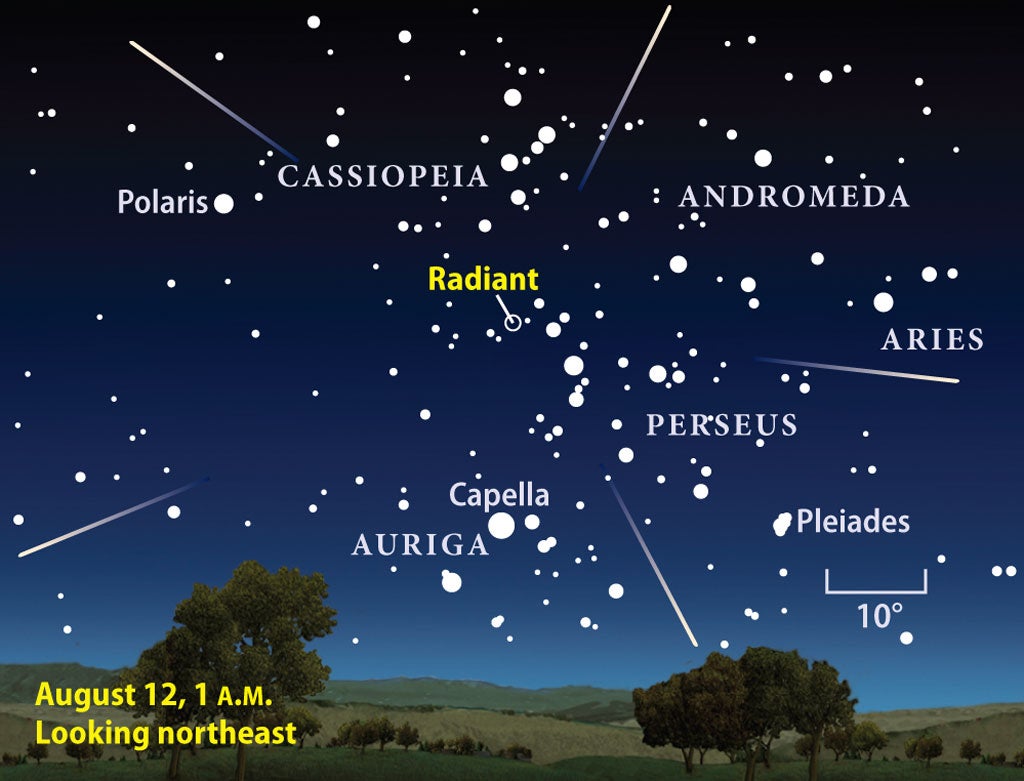One of the most-observed meteor showers will peak August 13. Typically it’s also one of the year’s best, but, unfortunately, this year the Perseids battle a Full Moon. However, you can still expect to see about 20 meteors per hour from a dark sky during the peak. Try to observe in the early morning hours and position the Moon behind a large building or tree. This will reduce the Moon’s glare and thus help you catch more meteors streaking across the sky.
If you trace the meteor trails backward, they meet within the constellation Perseus the Hero; this is how the shower got its name. The particles we see as meteors originated from Comet 109P/Swift-Tuttle. As Earth runs into the comet’s particle stream, we view the bright, fast meteors.
Although the Perseids peak on the 13th, you can still catch meteors associated with the shower up to a few weeks on either side of the maximum. As August begins, you might spot about five per hour. “Try viewing the Perseids a few days before August 13, shortly before dawn,” says Astronomy magazine Senior Editor Richard Talcott. “The meteors won’t be competing with the Moon.”
You don’t need binoculars or a telescope to observe the Perseids; eyes alone provide the widest field of view. Just head to a dark location and look up and scan around the northern sky. (“Dark” skies are at least 40 miles away from light-polluted cities.) Bring lawn chairs to ease neck strain, and don’t forget the bug spray and a blanket.
- Video: How to observe meteor showers, with Michael E. Bakich, senior editor
- Video: Easy-to-find objects in the 2011 summer sky, with Richard Talcott, senior editor
- StarDome: Locate constellation Perseus the Hero in your night sky before this meteor shower with our interactive star chart.
- Sign up for our free weekly e-mail newsletter.











